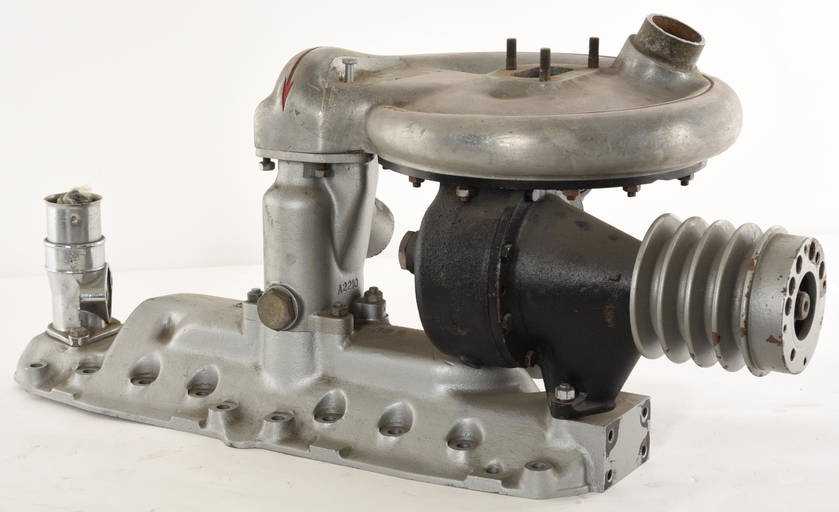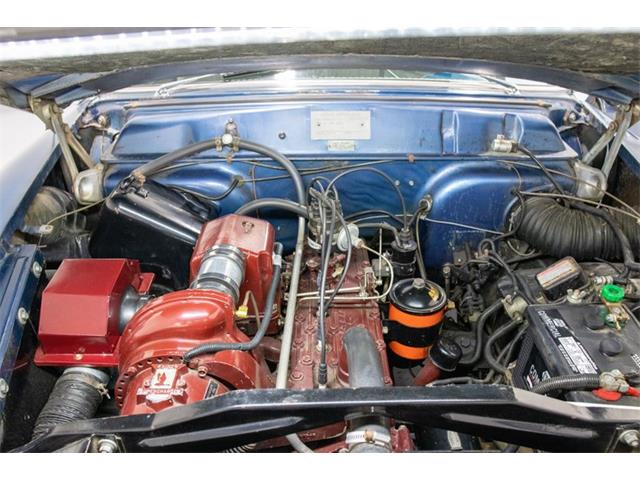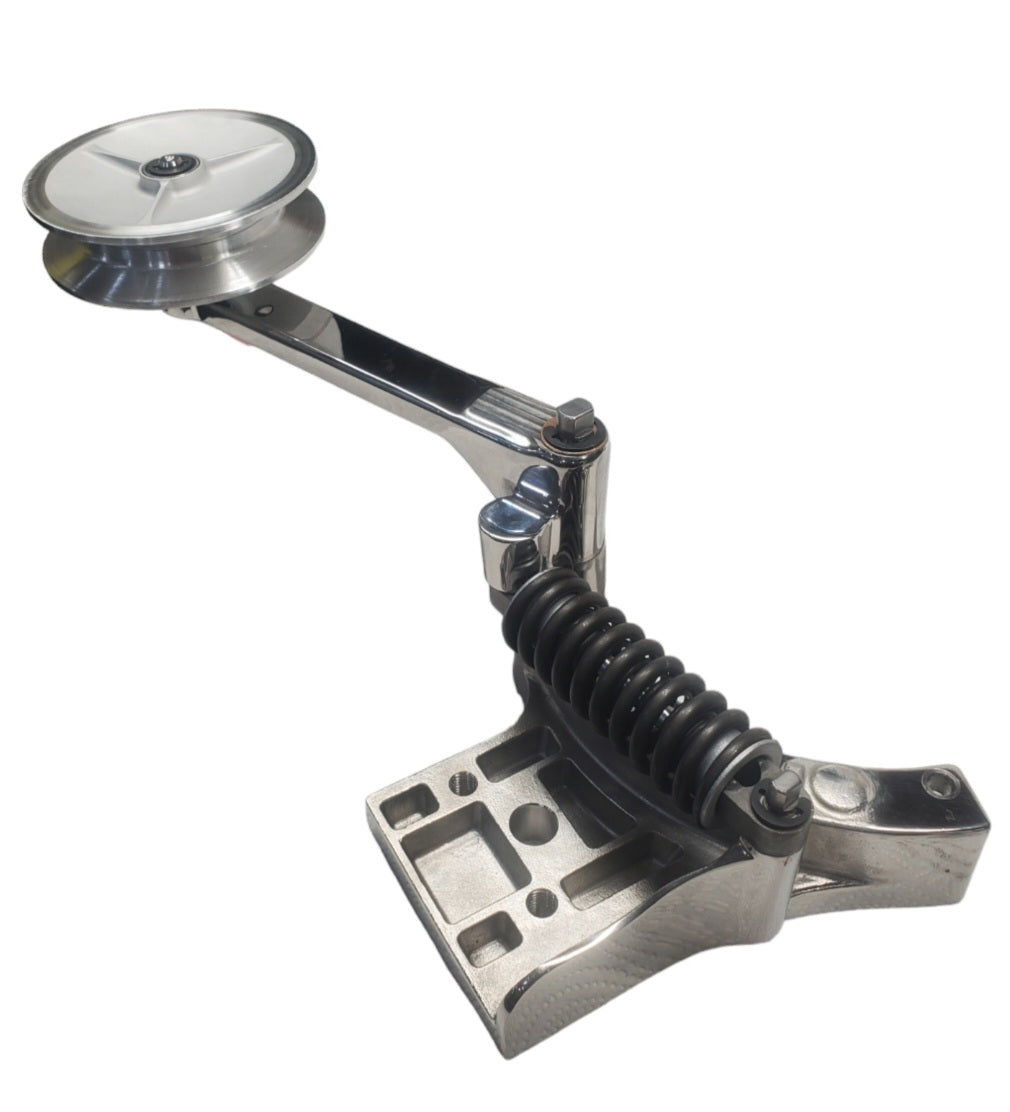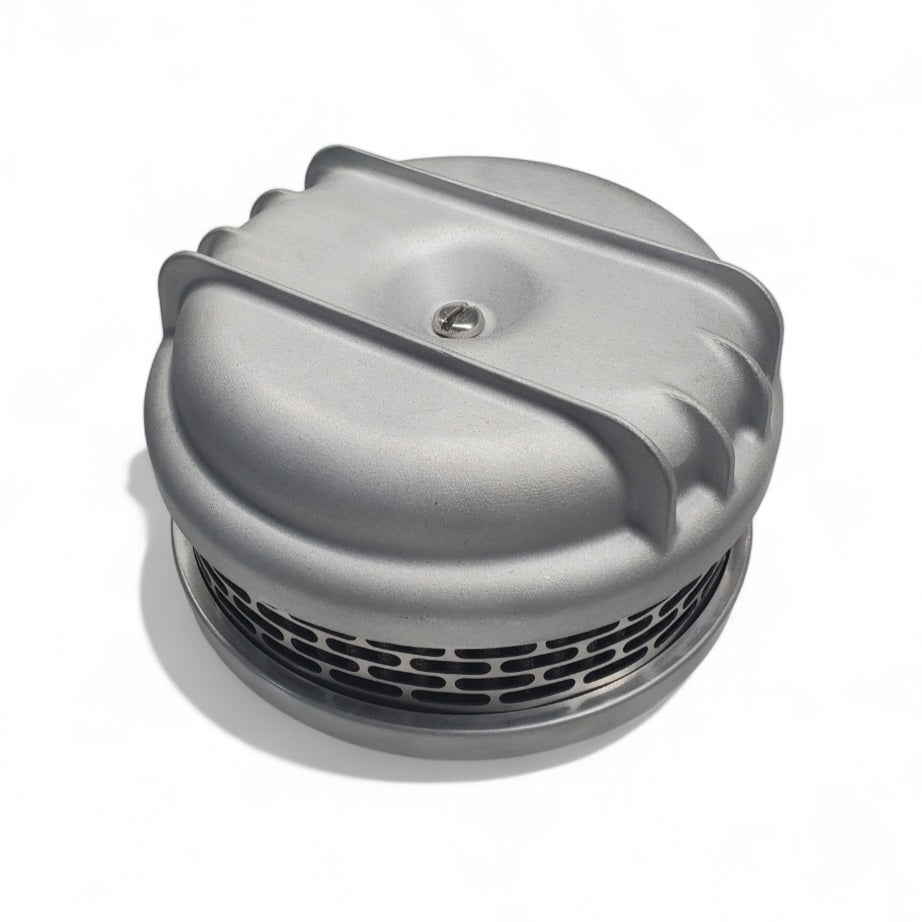
The McCulloch VS57 Supercharger: How a Mid‑Century Centrifugal Blower Helped Shape Hot‑Rod Culture
Share
Introduction: more air, more POWER!!!
The post‑war hot‑rod scene was built on a simple equation: air plus fuel equals horsepower. Even before World War II, engineer and speed‑boat champion Robert Paxton McCulloch had been tinkering with ways to jam more air into internal combustion fun machines. He poured money into a Milwaukee machine shop where he and his partners built racing engines and some of the first centrifugal blowers for Ford’s almighty flathead V‑8. Those early units were ingenious but rough around the edges. They used a worm‑gear drive, required engine‑oil plumbing, and delivered more noise than boost. During the war, the company pivoted to defense work and eventually moved west, where McCulloch Motors evolved into a diversified manufacturer of chain saws, small aircraft engines, and todays topic, superchargers.
 (an early McCulloch supercharger made for the Ford flathead V8)
(an early McCulloch supercharger made for the Ford flathead V8)
By the early 1950s, McCulloch’s engineering division was tasked with taking another stab at the old belt driven intake manifold. They were to create a reliable, affordable, and quiet centrifugal supercharger that could be bolted onto virtually any engine. The result was the VS57. A totally marvel piece of engineering. A variable‑speed, ball‑drive blower that would become an unmistakable piece of speed equipment in hot‑rodding history.
The “everyman” supercharger
A production mindset
McCulloch’s engineers were thinking BIG, approaching the VS57 as a broad consumer product. They reportedly spent over $700,000 refining the castings and internal components (an enormous investment for a bolt-on speed accessory). The goal was to build a unit that delivered boost at low rpm, avoided overspeed at high rpm, and remained quiet, self‑contained, and easy to service. It was road-tested for two years before its release in 1953.
Variable‑speed drive with planetary ball gear
The VS57’s brilliance was in its variable‑ratio V‑belt drive combined with a planetary ball gearbox. At low speeds, a spring-loaded idler kept the pulley sheaves apart, driving the belt deep into the groove and multiplying input speed up to 23:1. As boost increased, the pulley closed, reducing the ratio to 13:1. The planetary ball gear then multiplied that input another 4.4 times to spin the impeller at over 30,000 rpm. A vacuum-controlled solenoid allowed instant pulley engagement for full boost. Lubrication was handled by an internal ATF pump, keeping the unit sealed and simple.
The result? Roughly 1.5 psi of boost at cruise and up to 5 psi at full throttle. Not earth-shattering numbers, but enough to transform a mild V8 into a neck breaker without compromising daily drivability.
Designed for any engine
The VS57 was a “blow-through” design — it pushed air into the carburetor, rather than pulling it through. This allowed for simpler installations on nearly any engine. McCulloch produced kits for Ford, Chevy, Cadillac, Lincoln, Studebaker, and even Jaguar. Each kit included crank pulleys with extra grooves, a carb bonnet, mounting brackets, and all necessary linkages.
From factory option to hot‑rod royalty
Kaiser and Studebaker
McCulloch’s first big customer was Kaiser. In 1954, the Manhattan sedan offered a VS57 on its L-head inline-six, boosting output from 118 to 140 hp. Studebaker followed in 1957 with the Golden Hawk — a 289 V8 and a VS57 made 275 hp and 333 lb-ft of torque. That made it one of the quickest cars of its day.

Hot‑rodders take notice
While OEM adoption was modest, hot rodders loved the VS57. It quickly found its way onto wide array of performance applications. McCulloch responded by expanding their kit lineup, hosting installation clinics, and offering direct-to-consumer support. Magazine features and dry-lake records followed.
A short lived success
McCulloch claimed monthly production capacity of 5,000 units, and total output in the 1950s exceeded 46,000. But not every owner treated them well. The VS57 required oil changes every 3,000 miles and relied on belt tension to control its ratio. Many users ignored maintenance or installed oversized pulleys to extract more boost, which could over-rev the planetary gear and lead to failure. Used responsibly, however, the VS57 was surprisingly reliable — a rare mix of accessibility and performance.
Evolution: VR57 and beyond
By 1956, McCulloch introduced the VR57 — a next-gen blower with internal ratio variation via pressurized oil. This design improved packaging and allowed for even greater boost control. Ford took notice and contracted McCulloch to supply VR57s for its Phase I “F-code” Thunderbirds and NASCAR entries.
The legacy of the VR57 continued in the simplified SN60 and later Paxton units, but the VS57 remained the spiritual heart of the line — the one that started it all.

(Mcculloch VR57 supercharger)
Nystrom Performance: Where we fit in
Today, finding original VS57 kits is a challenge. Many are incomplete or damaged. That’s where Nystrom Performance steps in.
Nystrom Performance exists to preserve that legacy by recreating hard to find parts with improved durability, without sacrificing vintage aesthetics. We strive to create value to our customers by using modern manufacturing methods to give you (our customers) the best low volume, high quality parts on the market.
Reverse‑engineering the past
Our Ford flathead VS57 mounting bracket is cast in 304 stainless steel. All critical surfaces are CNC-machined. The tension arms are fitted with double high-load oil-lite bushings and our bespoke idler pulleys house sealed ball bearings. It includes a custom 6061 aluminum pulley and mounts to the original generator bracket. It mimics the geometry of the original bracket, but has many improvements. Offered in both cast and polished finishes.

Nystrom Performance also offers a precision crankshaft pulley for flathead V8s — machined from solid 6061 aluminum, and designed with an extra V-groove to run the blower belt. Even the VS57 emblem is available, recreated in 3D printed aluminum and sold with mounting hardware for restorers. We also offer an air cleaner specifically for the VS57 housing a K&N washable filter element for maximum performance and a traditional esthetic.

A philosophy of continual improvement
Just like McCulloch in the ’50s, Nystrom aims to make power accessible, reliable, and cool. Every part honors the original engineering while quietly improving it with better materials, tighter tolerances, and modern manufacturing processes.
Check out our expanding offerings towards the VS57 line at nystromperformance.com
